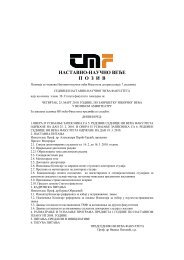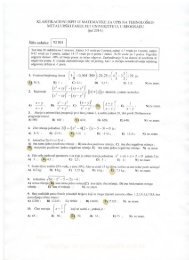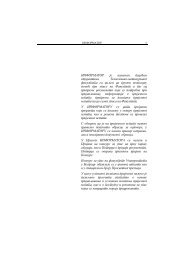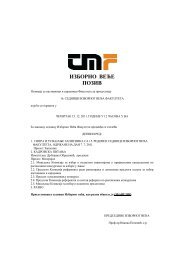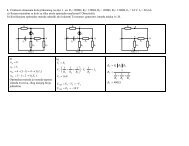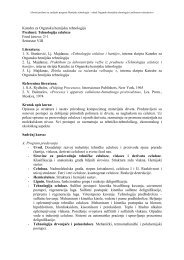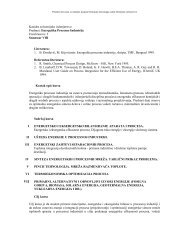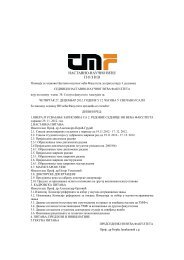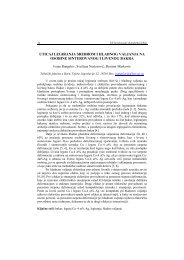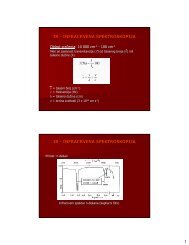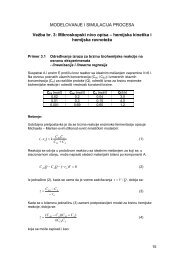1 Matlab solution to diffusion-reaction problems
1 Matlab solution to diffusion-reaction problems
1 Matlab solution to diffusion-reaction problems
Create successful ePaper yourself
Turn your PDF publications into a flip-book with our unique Google optimized e-Paper software.
where f(C) is the rate (dimensional) of consumption of species. The order of the differential equationcan be reduced by one by using the transformation p = dC/dx. Noting thatwe find that Eq. (12) can be written asd 2 Cdx 2= p dpdCD e p dp = f(C) (14)dCThe above equation can be solved by separation of variables. Two limits are needed <strong>to</strong> obtainthe value of the concentration gradient at the surface, p s . At the pore end, the value of the gradientp is zero. Also for large values of Thiele modulus the concentration drops <strong>to</strong> nearly zero at someinterior point in the catalyst. Hence the concentration can be set as zero at the pore end. Thus wecan set C = 0 at p =0 as one of the limits for integration of Eqn. (14). Let the surface gradient bedesignated as p s and the concentration at the surface as c s . This sets another limit for integrationof Eqn 13 which can be now be written as:Integrating and rearranging∫ psD e pdp =0∫ Cs0(13)f(C)dC (15)[ ( ∫ 1/2 Csp s = − 2/D e f(C)dC)](16)0The minus sign is used for the square root since the concentration is decreasing with increase in x.The effectiveness fac<strong>to</strong>r is given by the ratio of the actual rate <strong>to</strong> that based on surface concentration.Actual rate = − D e p s S p (17)by Ficks law applied at the surface. Hence the effectiveness fac<strong>to</strong>r is given by:η = −D e p s S p /V p f(C s ) (18)Using the Eq. 16 for p s we find[ ∫ 1/2 Csη =(S p /V p )f(C s ) 2D e f(C)dC](19)The above result is applicable for any kinetics provided we are in the asymp<strong>to</strong>tic region. For a firs<strong>to</strong>rder <strong>reaction</strong> η =1/Λ for large Thiele modulus. In order <strong>to</strong> make the results in the same format itis convenient <strong>to</strong> define a Thiele modulus for any kinetics as:[ ∫ −1/2 CsΛ=(V p /S p )f(C s ) 2D e f(C)dC](20)which is known as the generalized Thiele modulus. Now we have η =1/Λ for any kinetics but onlyin the asymp<strong>to</strong>tic case. The expression for η is now generalized as:η = tanh(Λ)(21)ΛThe above expression is strictly valid only in the asymp<strong>to</strong>tic region where tanh(Λ) tend one but isused for the entire range of Λ values as an approximate <strong>solution</strong>.004



